- europages
- >
- COMPANIES - SUPPLIERS - SERVICE PROVIDERS
- >
- optical filters
Results for
Optical filters - Import export
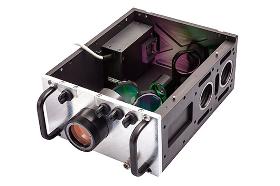
BEFORT WETZLAR OD GMBH
Germany
Befort develops and manufactures laser optics for a wide range of applications since more than 20 years. Befort offerings range from a simple AR coated protective glass with a high laser damage threshold to a complex focus readjustment unit for ultrashort pulse lasers (Zoombox). Our laser optics are made of high quality Schottglass or quartz glass. Befort coats the optics precisely for their wave length. The coating exhibits a particular high laser damage threshold (LDT). We develop and manufacture for you Laser mirrors (metallic or dielectric) Laser filters Laser optics Telecentric laser optics Ultrashort pulse laser optics
Request for a quote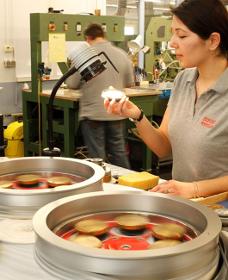
BEFORT WETZLAR OD GMBH
Germany
Finest quality surface polishing is vital in plane optic production. At Befort, this has top priority from production all the way to final inspection. Thanks to sophisticated CNC technology, we are able to produce single planeoptic components as well as multifunctional systems. We process optical glass, filter glass, quartz glass and float glass up to a size of 600 mm diameter. We make filters, groundglass screens, plane mirrors, windows with a plane parallel surface contour and realize customized solutions for specific applications. In our test laboratory we measure machined surfaces with an interferometer to be able to guarantee top optical quality! No lens element leaves our factory before it meets the exact specifications and requirements of the customer
Request for a quote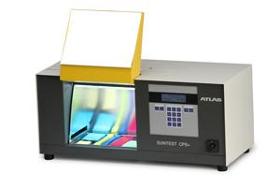
ATLAS MATERIAL TESTING TECHNOLOGY GMBH
Germany
The Atlas SUNTEST CPS+ is the small entry model. CPS+ is the most widely used benchtop xenon instrument in the world. Its compact design, easy handling and proven reliability make it the ideal quality control and R&D screening device for a variety of industries, such as plastics, packaging, pharmaceuticals, cosmetics, and many more. 1x 1500 W air-cooled Xenon Lamps 560 cm 2 exposure area Measurement and control of Irradiance in the wavelength range 300-800 nm / Lux; or 300-400 nm / 340 nm Measurement and control of Black Standard Temperature (BST) Display of Chamber Temperature Display of Test Values and Diagnostic Messages Parameter Check Two pre-programmed test methods Storage for 6 user-defined test methods Multilingual User Interface Benchtop design 90 x 35 x 35 cm Static, horizontal exposure area for flat or 3D specimen Fan-controlled BST from 45-100 °C (without chiller unit SunCool) Non-aging reflector and filter system, consistent of selectively reflecting mirrors and a coated quartz Switch-off choices Radiant Exposure or Test Time Base Filter as carrier for additional optical filters Data output via serial interface RS232 Internally integrated Memory Card for Software Updates Light Monitor 300-400nm Light Monitor 300-800nm Humidity Sensor for measuring relative humidity during testing

ATLAS MATERIAL TESTING TECHNOLOGY GMBH
Germany
Degradation and Heat Sunlight can have adverse affects on materials and components, oftentimes initiating and accelerating the degradation process as it interacts with temperature, moisture and other environmental effects. In addition, it is critical to understand the effects of heat created by sunlight with respect to operational performance, thermal management, noise and dimensional stability. A new product should be tested under solar environmental conditions representative of those locations in which it will exist - anywhere ranging from the heat of the outback in Australia to the frigid climate of arctic areas. Atlas solar simulation systems are custom-designed in both power and size. Having this flexibility, they can be integrated into various types of environmental test chambers whether they be small or walk-in, chambers used in component/ small product testing or drive-in chambers for complete vehicle testing, even up to extra large systems for trains, trucks and aircrafts. Superior Solar Simulation with SolarConstant A key to the success of solar environmental testing is the quality of the solar simulation itself. A close spectral match to natural sunlight is critical for accurate reproduction of test conditions. The Atlas SolarConstant luminaire offers high irradiance efficiency and superior spatial uniformity on the test area. Combined with special Metal Halide Global (MHG) lamps and optical filters, the SolarConstant creates a spectral distribution that closely matches natural sunlight. Its proven modular design makes this unit ideal for large custom-designed solar simulators as well as smaller standardized laboratory test systems. SolarConstant Serving Global Testing Needs SolarConstant products are designed to meet a large number of standards as well as industry test methods such as DIN 75220, MIL-STD-810, IEC 61215, IEC 904-9, EPA 40-CFR/ SC03, BMW PR306.5, Renault 32-00-022, Telcordia GR-487-CORE and others. Atlas offers a complete series of SolarConstant luminaires to satisfy an array of global testing needs: SolarConstant MHG 4000/2500/1200/575: These luminaires utilize Metal Halide Global technology for full-spectrum solar simulation. Optical filters adjust the output for the best match to natural indoor/outdoor sunlight. They are ideal for solar simulators used to determine thermal heating effects of solar radiation such as fit and finish, dimensional stability or thermal transmission. They are also suited for identifying photodegradation effects of polymers and coatings such as cracking, color fading and other failures, or testing PV module performance. SolarConstant MIL: These luminaires utilize Metal Halide Global technology combined with a unique "multi-level" output for full-spectrum solar simulation. Especially useful for satisfying stringent MIL-STD-810G method 505.5 (Procedure I) - determination of heat produced by 24-hour cycles of solar radiation. It is also ideal for agro-science requiring diurnal cycles, e.g. plant growth studies and others. SolarConstant MH 1500/1200/1000: These luminaires utilize Metal Halide technology for specific high-UV level testing or to meet limited budget applications. Solar Constant UV 2000: These luminaires utilize Mercury technology for creating UV radiation (280 - 400 nm) and are used to study photo-aging effects caused by solar UV radiation only. In addition to the SolarConstant line of products, Atlas comolements its luminaire portfolio with Halogen technology for visible (VIS) and heat radiation (IR). IR-luminaires with 2000W / 1500 W are used to set up high-performance systems for testing heating effects similar to heating caused by sunligt. In addition to the SolarConstant line of products, Atlas comolements its luminaire portfolio with Halogen technology for visible (VIS) and heat radiation (IR). IR-luminaires with 2000W / 1500 W are used to set up high-performance systems for testing heating effects similar to heating caused by sunligt. From Outdoor Data to Laboratory Testing No environmental laboratory test is complete withut the confirmation and correlation to natural conditions. Atlas operates a number of outdoor exposure sites in key climate zones worldwide and can produce the natural exposure data you need. Using our expertise in both outdoor and accelerated testing, Atlas can assist you in reproducing outdoor conditions in your laboratory enabling your testing to reliable, fast and as realistic as possible. Test Chamber Examples Atlas has installed over 100 systems worldwide and is a leader in combining the technologies of testing with solar simulation. Below are examples of the most common test chambers with solar simulators: Climate test chamber with wind tunnel and solar simulator Climate test chamber with dynamometer and solar simulator Solar heat load test chamber with solar day cycling Climate test chamber with dynamic road simulation and solar simulator Custom solar simulator for PV module testing, Light Soak testing, I/V curve tracing Solar environmental Walk-in test chamber for component / product testing Atlas CESORA Atlas' CESORA (Calculation of Effective Solar radiation) software is extremely useful in the absence of measured outdoor data. With CESORA, you can calculate effective solar radiation for any time, day, month or year on any titled surface over any spectral range from 250-3000 nm. Positioning System To allow the SolarConstant solar simulator to move and replicate various natural solar conditions, a mechanical positioning system is typically installed. This enables motorized movement of the solar array within all desired spatial directions to simulate solar day cycles for example. Atlas offers both low-cost manual remote controls or full automatic alternatives that are integrated into the Atlas software. Positioning systems are typically customized towards the application and local test facility. Atlas will work with you to define the SolarConstant positioning system that will work best for you. Control System The operation of the SolarConstant system is handled by a dedicated operator interface. Atlas provides tailored menu-driven software for the programming and operation of each solar simulation system. Any solar simulation profile - for example morning, noon, afternoon, etc. can be stored and combined with various types of programmed test sequences for a complete integrated test program. For seamless operator interface, the Atlas designed solar control interface can be linked to the master IT environment of the test facility. We believe that a strong grasp of our customers' requirements is a key factor in developing a solution tailored to their needs. In order to simplify initial communications and understand your requirements more easily, please fill out the provided questionnaire under 'Downloads' and fax it back to +49-6105-9128-80.
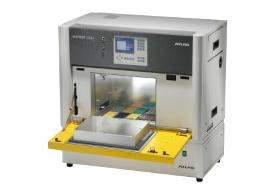
ATLAS MATERIAL TESTING TECHNOLOGY GMBH
Germany
The Atlas SUNTEST XLS+ is an with state-of-the-art UV-control for reliable R&D screening tests. The benchtop design fits into every lab while optional accessories – water spray, immersion, refrigeration – expand the testing capabilities and offer easy ways to customize it to your needs. It comes standard with a 1100 cm 2 exposure area, suiting multiple flat or 3D samples. 1x 1700 W air-cooled Xenon Lamps 1100 cm 2 exposure area Touch screen with colour display to monitor and display test parameters Measurement and Control of Irradiance in the wavelength range 300-800 nm / Lux; or 300-400 nm / 340 nm Measurement and Control of Black Standard Temperature (BST); BPT optional Measurement of Chamber Temperature Display of Diagnostic Messages Storage for 10 user-defined test methods Pre-programmed international standard test method Multilingual User Interface Control Panel tiltable for increased operating comfort Bench-top design 90 x 54 x 62 cm Static, horizontal exposure area for flat or 3D specimen Temperature control of BST in the range 45-100 °C; BPT 45-95 °C Fan-controlled temperature difference between Chamber Temperature and BST Light cassette including non-ageing aluminium reflector, uncoated quartz filter and slot for additional optical filters Switch-off by radiant exposure, light exposure time or total operating time Advanced Auto Start functions Data output via Memory Card or RS 232 Ethernet interface plus XenoTouch Add-ons 1, 2, and 3 (“Remote Control“, “E-Mail Service“, “Online Monitoring“) Irradiance control wide band 300 – 800 nm (Lux) or narrow band 300 – 400 nm BST/BPT exchange kit
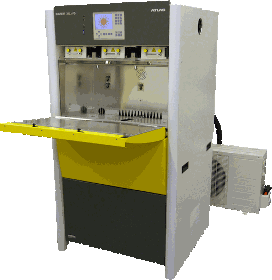
ATLAS MATERIAL TESTING TECHNOLOGY GMBH
Germany
The Atlas SUNTEST XXL+ FD is a large state-of-the-art xenon flatbed instrument. It’s completely target designed to meet the testing needs of the FMCG industry, such as drinks, foodstuffs, personal care or household products. XXL+ FD enables consumer goods manufacturers to test their products realistically within very short test times, typically with acceleration factors between 10-30 versus real time. It’s for reliable qualification of stable product formulations, determination of appropriate packaging materials, and supporting product shelflife claims. 3x 1700 W air-cooled Xenon Lamps 3000 cm 2 exposure area Touch screen with colour display to monitor and display test parameters Measurement and Control of Irradiance 300-400 nm / 340nm or 420nm Measurement and Control of Black Standard (BST); (Black Panel optional) Measurement and Control of Chamber Temperature Display of Diagnostic Messages Storage for 10 user-defined test methods Pre-programmed international standard test method Multilingual User Interface Control Panel tiltable for increased operating comfort Thermal insulation of test chamber and periphery preventing water condensation Temperature control selectable either via CHT (15° * - 70 °C; *with chiller) or via CHT and BST (25° * - 100 °C; *with chiller) simultaneously (dual control) Adapted chiller SunCool XXL+ for testing at low temperatures in the range 15-30°C CHT; detachable for standard weathering testing needs Ultrasonic humidification system for controlled humidity during operation without SunCool Specimen spray system with integrated 60 l water reservoir for spray cycles at 25°C ** - 70°C Static, horizontal exposure area for flat or 3D specimen Test chamber with 5 ° slope for optimum spray water drain Access port ca. 3,0 x 2,5 cm for potential use of additional external sensors inside the test chamber Light cassette including non-ageing aluminium reflector, coated quartz filter and slot for additional optical filters Switch-off by radiant exposure, light exposure time or total operating time Advanced Auto Start functions Data output via Memory Card or RS 232 Ethernet interface plus XenoTouch Add-ons 1, 2, and 3 (“Remote Control“, “E-Mail Service“, “Online Monitoring“) Sliding sample table for easy specimen loading; exposure area (WxD) 74 x 37 cm
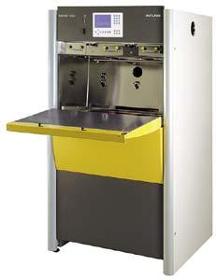
ATLAS MATERIAL TESTING TECHNOLOGY GMBH
Germany
The Atlas SUNTEST XXL+ is a large state-of-the-art xenon flatbed instrument. The 3000 cm2 test chamber is perfect for high volume weathering testing of large flat or 3-D specimen. SUNTEST XXL+ offers a complete set of features ideal for standard testing covering all common industry weathering standards. 3x 1700 W air-cooled Xenon Lamps 3000 cm 2 exposure area Touch screen with colour display to monitor and display test parameters Measurement and control of Irradiance 300-400 nm / 340nm or 420nm Measurement and control of Black Standard (BST); (Black Panel optional) Measurement and control of Chamber Temperature Display of Diagnostic Messages Storage for 10 user-defined test methods Pre-programmed international standard test method Multilingual User Interface Control Panel tiltable for increased operating comfort Ultrasonic humidification system for humidity control Specimen spray system with integrated 60 l water reservoir Static, horizontal exposure area for flat or 3D specimen Test chamber with 5 ° slope for optimum spray water drain Access port ca. 3,0 x 2,5 cm for potential use of additional external sensors inside the test chamber Light cassette including non-ageing aluminium reflector, coated quartz filter and slot for additional optical filters Switch-off by radiant exposure, light exposure time or total operating time Advanced Auto Start functions Data output via Memory Card or RS 232 Ethernet interface plus XenoTouch Add-ons 1, 2, and 3 (“Remote Control“, “E-Mail Service“, “Online Monitoring“) Various specimen holders to hold different panel sizes. XenoCal sensors to calibrate BST and irradiance. Large variety of filter systems: coated and uncoated quartz, special UV glass, daylight filter, window glass, Solar ID 65, Solar Standard, to meet various spectral specifications in standards.
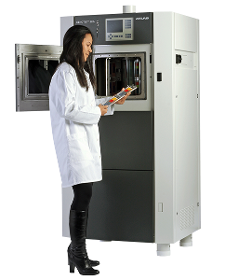
ATLAS MATERIAL TESTING TECHNOLOGY GMBH
Germany
The 220 is a large capacity lightfastness tester dedicated for textile testing. It comes with premium on-rack light and temperature sensor and non-aging optical filter technology. With the ability to test 38 samples, the 220 provides nearly twice as much capacity in the same footprint compared to 150S+. The combination of its large test chamber and the efficient use of power and water make it today’s most economic air-cooled instrument available. It complies to standards ISO 105 B02, AATCC TM16 (option 3), and Marks & Spencer C9, C9A. 1x 2200 W air-cooled Xenon Lamp 2310 cm 2 exposure area Touch screen with colour display to monitor and display test parameters Direct Setting and Control of Irradiance (300-400 nm) Direct Setting and Control of Black Standard Temperature Direct Setting and Control of Chamber Temperature Direct Setting and Control of Relative Humidity Display of Diagnostic Message Storage for 10 user-defined tests Multilingual User Interface Non-aging filter systems for ISO 105-B02 and AATCC TM16 On-rack XENOSENSIV® for measuring and controlling irradiance (in W/m²) and Black Standard Temperature on sample level Selectable temperature control either by Chamber Temperature (up to 65 °C) or by Dual Control: Chamber Temperature and Black Standard Temperature (up to 100 °C) simultaneously Fan-controlled temperature difference between Chamber and Black Standard Temperature Ultrasonic humidification system with integrated 60l water reservoir for humidity control (automatic refill) Sample rack suiting 19 sample holders with capacity for 38 standard textile samples Pre-programmed standards ISO 105 B02 and AATCC TM16-2004 (Option 3) Switch-off by radiant exposure, light exposure or total operating time UV-protected test chamber window Advanced Auto Start functions Internal memory chip for storing instrument data Data output via Memory Card or RS 232 Ethernet interface plus XenoTouch Add-ons 1, 2, and 3 (“Remote Control“, “E-Mail Service“, “Online Monitoring“) XenoCal BB 300-400 XenoCal BB 300-400 BST XenoCal BST
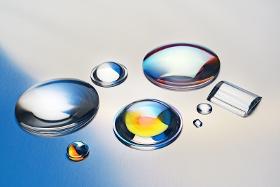
SÜD-OPTIK SCHIRMER GMBH
Germany
We produce our optical filters and other coatings with the most modern high vacuum coating systems both according to customer specifications and according to our own layer design, vacuum coating
Request for a quote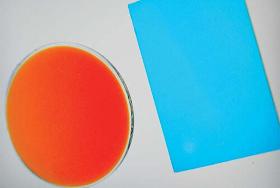
SÜD-OPTIK SCHIRMER GMBH
Germany
We produce our optical filters and other coatings with the most modern high vacuum coating systems both according to customer specifications and according to our own layer design, vacuum coating
Request for a quote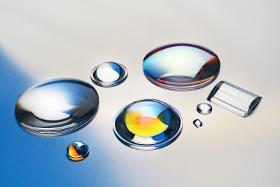
SÜD-OPTIK SCHIRMER GMBH
Germany
We produce our optical filters and other coatings with the most modern high vacuum coating systems both according to customer specifications and according to our own layer design, vacuum coating
Request for a quote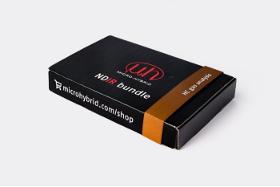
MICRO-HYBRID ELECTRONIC GMBH
Germany
The NDIR bundle HC made by Micro-Hybrid is a set of perfectly matched IR emitters and detectors for hydrocarbon gas analysis which includes a NAC based IR emitter with reflector of the JSIR 350 series, completed with the highly sensitive thermopile dual detector of the MTS 200 series. The optical filter of the detector is adapted to the characteristic wavelength (CWL: 3400 ± 20 nm / HBW: 140 ± 20 nm) range of hydrocarbons. In order to get fast test results in biogas plants or for the development of hydrocarbon probes to control and monitor chemical processes, Micro-Hybrid is the only manufacturer worldwide to offer both infrared components for the analysis of infrared active gases.
Request for a quote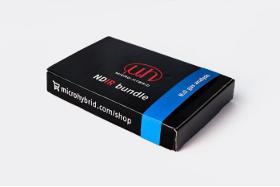
MICRO-HYBRID ELECTRONIC GMBH
Germany
The NDIR bundle N2O is made up of optimally matched thin film infrared emitters and a corresponding IR thermopile detector to measure nitrous oxide in gas mixes. The kit has a short delivery time and therefore achieves measurement results in a short time. This is especially an advantage for developers in research projects with a limited time span. The two-channel detector's optical filter has been optimized for the absorption spectrum of N2O and can provide important data, especially in the analysis of exhaust gases in the automotive, railway and marine sectors, the monitoring of industrial exhaust emissions and environmental monitoring.
Request for a quote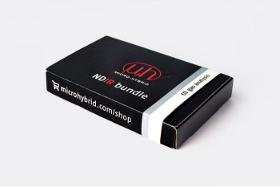
MICRO-HYBRID ELECTRONIC GMBH
Germany
The NDIR bundle CO developed by Micro-Hybrid consists of perfectly matched infrared components for gas analysis of carbon monoxide. A NAC-based IR source with reflector of the JSIR 350 series is combined with the highly sensitive thermopile dual detector of the MTS 200 series. The optical filter of the dual detector is adjusted to the typical wavelength range of carbon monoxide: CWL: 4650 ± 40 nm / HBW: 180 ± 20 nm. Users receive high-quality measurement data in a short time, for instance for the analysis of exhaust gases in the automotive, rail and shipping industries or for monitoring production facilities and plants as well as for controlling chemical processes.
Request for a quote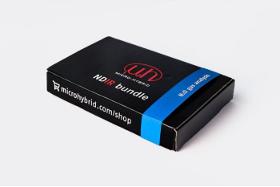
MICRO-HYBRID ELECTRONIC GMBH
Germany
The NDIR bundle N2O is made up of optimally matched thin film infrared emitters and a corresponding IR thermopile detector to measure nitrous oxide in gas mixes. The kit has a short delivery time and therefore achieves measurement results in a short time. This is especially an advantage for developers in research projects with a limited time span. The two-channel detector's optical filter has been optimized for the absorption spectrum of N2O (CWL: 4525 ± 20 nm / HBW: 83 ± 6 nm) and can provide important data, especially in the analysis of exhaust gases in the automotive, railway and marine sectors, the monitoring of industrial exhaust emissions and environmental monitoring.
Request for a quote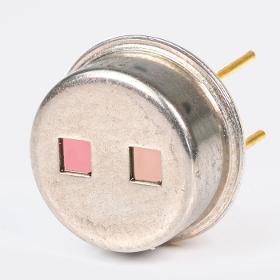
MICRO-HYBRID ELECTRONIC GMBH
Germany
Two channel premium pyrodetector detector on TO39 header for measurement of sulfur hexafluoride (SF6). The detector suits applications of industrial gas measurement or monitoring of insulation gases in the field of production and process engineering at ambient temperatures between -20 and 85 °C. With a CWL of 10540 ± 100 nm and a HBW of 690 ± 100 nm, the narrowband optical filter provides ideal values for precise analysis of the target gas. In addition, there comes a reference channel with the CWL: 5060 ± 25 as well as the HBW: 100 ± 15 nm. With a very high detectivity of up to 4.0*10^8 cm√Hz/W and sensitivity of up to 200000 V/W, the signal quality remains unique in this technology range. The detector features a broad spectral sensitivity 2 - 15 µm (optimized from 3 - 5 µm), a high sensitivity with a modulation frequency of up to 100 Hz, a low microphone effect due to the small membrane mass, very low temperature dependence and an amplified signal in current mode.
Request for a quote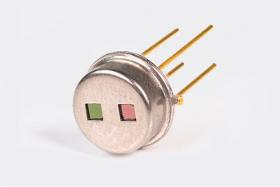
MICRO-HYBRID ELECTRONIC GMBH
Germany
The IR Thermopile can be used to measure methanol (CH4O / half structure formula: CH3OH) & ethanol (C2H5OH) at ambient temperatures between -20 and 85 °C. With its very high detectivity of up to 6.27*10^8 cm√Hz/W and a sensitivity of up to 171 V/W, the 2-channel detector is the high end solution for demanding applications in medical technology or industrial production and process applications. The optical filter window with a CWL of 9663 ± 80 nm and a HBW of 240 ± 40 nm is specifically designed for NDIR gas analysis of these typical alcohol compounds. These signal values, which are comparable to pyrodetectors, are achieved by the interaction of chip design, integrated thermistor for reference temperature determination, an interference absorber and backgassing with krypton. The precise measurement results are further secured by the second reference channel (CWL: 5060 ± 25, HBW: 100 ± 15 nm).
Request for a quoteDo you sell or make similar products?
Sign up to europages and have your products listed
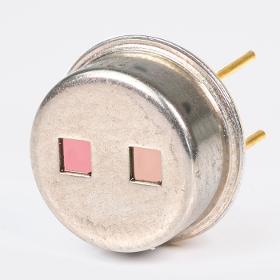
MICRO-HYBRID ELECTRONIC GMBH
Germany
The pyro-detector measures methanol (CH4O/half structure formula: CH3OH) & ethanol (C2H5OH) at ambient temperatures between -20 and 85 °C. With its high detectivity of up to 4.0*10^8 cm√Hz/W and a sensitivity of up to 200000 V/W, the 2-channel detector represents the high end solution for demanding applications in medical or industrial production and process applications. The optical filter with a CWL of 9663 ± 80 nm and a HBW of 240 ± 40 nm combined with the reference channel are specially designed to analyze typical alcohol compounds. The exceptional signal values result from the combination of a broad spectral sensitivity of 2 - 15 µm (optimized from 3 - 5 µm), a high sensitivity with a modulation frequency of up to 100 Hz, a low microphone effect due to the low membrane mass, very low temperature dependence and an amplified signal in current mode. The reliable measurement results are furthermore secured by a high read-out rate up to 100 Hz as well as by the short response time.
Request for a quote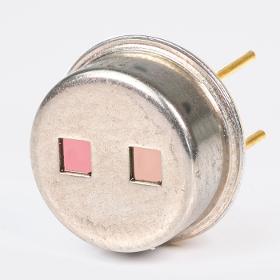
MICRO-HYBRID ELECTRONIC GMBH
Germany
The premium dual-channel pyrodetector meets the most demanding measurement applications for the analysis of N2O (nitrous oxide) in environments from -20 to 85 °C. It achieves an especially high detectivity of up to 4.0*10^8 cm√Hz/W and sensitivity of up to 200000 V/W. The optical filter with a CWL of 4525 ± 20 nm and a HBW of 83 ± 6 nm as well as an additional reference channel (CWL: 3910 ± 28, HBW: 70 ± 10 nm) match the characteristics of the gas exactly. NDIR gas analysis in aerospace, industrial process and exhaust gas measurement or anesthetic gas monitoring in medical are typical application fields for the MPS2SENS nitrous oxide. The pyroelectric detector shows less sensitivity to external influences through internal signal amplification. Likewise, temperature fluctuations have only a minor influence due to the low thermal mass of the membrane. The special Micro-Hybrid product design allows a higher read-out rate up to 100 Hz and short response times of the dual detector.
Request for a quote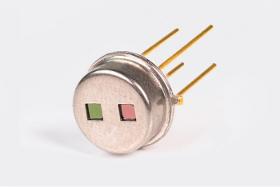
MICRO-HYBRID ELECTRONIC GMBH
Germany
"The dual channel IR thermopile for NDIR gas analysis of halothane (C2HBrClF3) with a CWL of 7665 ± 77 nm and a HBW of 242 ± 40 nm. The signal strength is of the high sensitivity IR detector is comparable to that of a pyro detector: high detectivity up to 6.27*10^8 cm√Hz/W and high sensitivity up to 171 V/W. These values can be achieved by filling with krypton. The MTS2SENS200 halothane provides reliable readings in environments between -20 and 85 °C, e.g. for anesthetic gas monitoring. The interference absorber, an integrated thermistor for reference temperature determination and the reference channel (CWL: 5060 ± 25, HBW: 100 ± 15 nm) are further important product features for long-term use in demanding medical applications. Two sensor chips with 200 BiSb/Sb thermocouples each form the basis of this premium detector. The narrow-band optical filter windows are specially adapted to the analysis of target gases in the application.
Request for a quote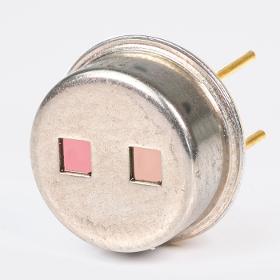
MICRO-HYBRID ELECTRONIC GMBH
Germany
The 2 channel premium pyrodetector is specially designed for the analysis of nitric oxide (NO). The optical filter with a CWL of 5300 ± 30 nm and a HBW of ± 20 nm as well as an additional reference channel (CWL: 3910 ± 28, HBW: 70 ± 10 nm) optimize the measurement results of the dual IR detector. Its main application lies in the measurement of process gases or exhaust gases in industrial production and process engineering. Storage and operation can take place between -20 and 85 °C. The particularly high detectivity of up to 4.0*10^8 cm√Hz/W as well as the very high sensitivity up to 200000 V/W provide an extraordinary signal quality in the sector of pyroelectric detectors. Two sensor chips with a thin film CPM membrane form the core of the dual detector MPS2SENS nitrogen monoxide. Thanks to the Ceramic Pyroelectrical Material (CPM) and the unique product design the detector features a high read-out rate up to 100 Hz as well as a short response time.
Request for a quote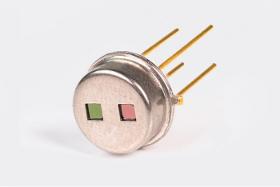
MICRO-HYBRID ELECTRONIC GMBH
Germany
The dual-channel thermopile is optimized for the measurement of carbon monoxide (CO) through an optical filter with a CWL of 4650 ± 40 nm and a HBW of 180 ± 20 nm. Medical technology, process or room air analysis are typical application fields for the MTS2SENS200 carbon monoxide. The MTS2SENS200 carbon monoxide dual detector is suitable for demanding applications at ambient temperatures from -20 to 85 °C. It has a particularly high detectivity. It has a particularly high detectivity of up to 6.27*10^8 cm√Hz/W and a sensitivity of up to 171 V/W. This signal quality is comparable to pyro detectors. The integrated thermistor for reference temperature determination and an additional reference channel (CWL: 3910 ± 28, HBW: 70 ± 10 nm) complete the product. The detector has as technological basis 2 chips with 200 bismuth antimony/antimony thermocouples each. Other applications of the detector include metabolic monitoring, spirometry, biotechnology and food technology.
Request for a quote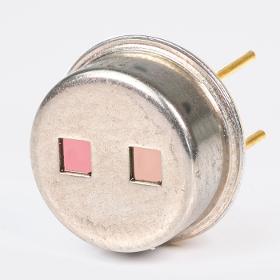
MICRO-HYBRID ELECTRONIC GMBH
Germany
The dual channel pyrodetector is specially designed for the measurement of carbon monoxide (CO) using an optical filter with a CWL of 4650 ± 40 nm and a HBW of 180 ± 20 nm. Medical, industrial gas analysis and environmental technology are typical fields of application for the MPS2SENS carbon monoxide. The dual detector meets demanding needs at ambient temperatures ranging from -20 to 85 °C. It has a particularly high detectivity of up to 4.0*10^8 cm√Hz/W and sensitivity of up to 200000 V/W. An additional reference channel (CWL: 3910 ± 28, HBW: 70 ± 10 nm) completes the product. The detector is equipped with 2 chips with a thin film membrane made of ceramic-pyroelectric material as technological basis. The unique detector design of Micro-Hybrid enables the high read-out rate up to 100 Hz as well as the short response time and guarantees precise and fast measurement results for NDIR gas analysis.
Request for a quote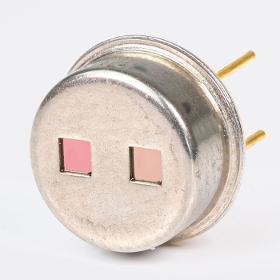
MICRO-HYBRID ELECTRONIC GMBH
Germany
The high detectivity up to 4.0*10^8 cm√Hz/W as well as the high sensitivity up to 200000 V/W characterize the MPS2SENS flourane. The optical characteristics of the infrared filter windows perfectly suit the analysis of flouranes (CWL of 8620 ± 45 nm, HBW of 540 ± 45 nm, reference channel with CWL: 5060 ± 25, HBW: 100 ± 15 nm). The MPS2SENS sulfur dioxide provides reliable readings in environments between -20 and 85 °C for NDIR gas measurement in medical applications, e.g. anesthetic gas monitoring. The pyroelectric detector has 2 chips with a thin film CPM membrane in the core. (CPM: Ceramic Pyroelectrical Material). Other key product features for long-term use in demanding applications: wide spectral sensitivity 2 - 15 µm (optimized from 3 - 5 µm), high sensitivity with a modulation frequency of up to 100 Hz, low microphone effect due to the low membrane mass, very low temperature dependence, amplified signal in current mode.
Request for a quote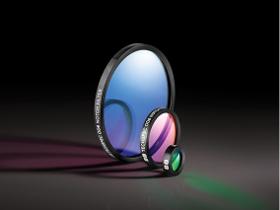
EDMUND OPTICS GMBH
Germany
Edmund Optics features the world’s largest inventory of off-the-shelf Optical Components, including a wide selection of Optical Lenses, Optical Filters, Optical Mirrors, Windows, Prisms, Beamsplitters, or Diffraction Gratings. Optical Lenses are designed for focusing or diverging lighting. Optical Filters are used to selectively pass or block a specific wavelength or wavelength range. Optical Mirrors, Prisms, or Beamsplitters split or alter the path of light. Windows are used to protect sensitive components such as electronic detectors or sensors from outside environments.
Request for a quoteResults for
Optical filters - Import exportNumber of results
26 ProductsCountries
Company type